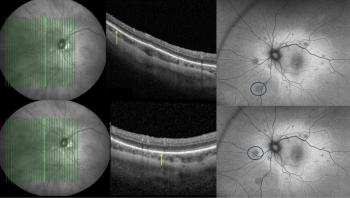
FDA grants Breakthrough Therapy Designation for Tinlarebant
The designation is based off previously reported phase 3 data from the ongoing DRAGON trial.
Belite Bio recently announced the US Food and Drug Administration (FDA) granted Breakthrough Therapy Designation for the company’s treatment for Stargardt disease (STDG1), Tinlarebant.1 This designation is based off previously reported phase 3 data from the ongoing DRAGON trial.
“Breakthrough Therapy Designation is an exciting milestone that underscores Tinlarebant’s potential to address a serious unmet need for patients with STGD1,” said Tom Lin, MD, PhD, chairman and CEO of Belite Bio. “We remain deeply committed to the Stargardt community and to advancing Tinlarebant as we prepare for the DRAGON study readout expected by the end of this year.”
A pre-specified interim analysis of the global phase 3 DRAGON trial support the Breakthrough Therapy Designation. According to the Data Safety and Monitoring Board (DSMB), the designation is based on preliminary clinical data in which a drug must demonstrate “substantial improvement” when compared to existing therapies that are 1 or more clinically significant endpoint. This designation is designed to expedite the development and regulatory review of drugs intended for serious or life-threatening conditions.
The preclinical data of the phase 3 DRAGON trial shows that Tinlarebant demonstrated “a favorable safety profile consistent with prior findings and its mechanism of action,” a press release said. The release went on to note that most participants experienced stable visual acuity, with mean changes from baseline of fewer than 3 letters over the course of the 2-year study.
The DRAGON phase 3 trial is a randomized, double-masked, placebo-controlled, global study in which 104 adolescent patients were enrolled across 11 jurisdictions, including the United States, United Kingdom, Germany, France, Belgium, Switzerland, Netherlands, China, Hong Kong, Taiwan, and Australia. The study’s primary endpoint is the growth rate of atrophic lesions, as well as assessing the drug’s safety and tolerability.
For the treatment of both STGD1 and
At the time of this article, there are no currently approved treatments for STGD1. If approved, Tinlarebant would be a novel oral therapeutic on the market addressing unmet needs in both STGD1 and GA.
Reference:
1. Belite Bio Announces FDA Granting of Breakthrough Therapy Designation for Tinlarebant for the Treatment of Stargardt Disease. BioSpace. Published May 21, 2025. Accessed May 21, 2025. https://www.biospace.com/press-releases/belite-bio-announces-fda-granting-of-breakthrough-therapy-designation-for-tinlarebant-for-the-treatment-of-stargardt-disease
Newsletter
Keep your retina practice on the forefront—subscribe for expert analysis and emerging trends in retinal disease management.













































